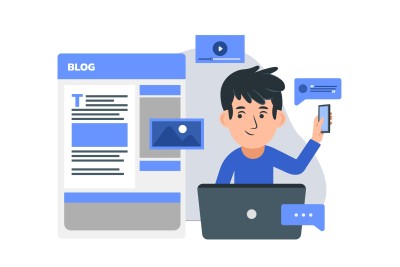ChatGPT is a set of models that can understand and generate natural language or code in a conversational format. ChatGPT is powered by GPT-3.5-Turbo, a model that improves on GPT-3 and is optimized for chat. ChatGPT is also compatible with GPT-4, the latest and most powerful model from OpenAI that can solve difficult problems with greater accuracy and reasoning capabilities.
ChatGPT API is a new dedicated API for interacting with these models. It allows you to easily integrate chatGPT into your custom business applications and leverage its benefits for various use cases,

You can use chatGPT to create a virtual assistant that can answer common questions, provide information, troubleshoot issues, and handle requests from your customers. ChatGPT can also generate personalized and engaging responses that can improve customer satisfaction and loyalty.
You can use chatGPT to generate creative and effective content for your business, such as blog posts, newsletters, social media posts, product descriptions, and more. ChatGPT can also edit and improve your existing content by adding relevant details, correcting errors, and enhancing the style and tone.


You can use chatGPT to facilitate communication and collaboration among your team members, partners, and stakeholders. ChatGPT can help you brainstorm ideas, provide feedback, summarize meetings, create action items, and more.
You can use chatGPT to generate creative and effective content for your business, such as blog posts, newsletters, social media posts, product descriptions, and more. ChatGPT can also edit and improve your existing content by adding relevant details, correcting errors, and enhancing the style and tone.

To use chatGPT API, you need to have an OpenAI account and an API key. You can then access the chatGPT models through the /v1/chat/completions endpoint. You can design your prompt by providing some instructions or examples for the model to follow. You can also specify various parameters to customize the output, such as temperature, frequency_penalty, presence_penalty, stop_sequences, etc.
How to use the chatGPT completion API for conversational AI
The chatGPT completion API is a new dedicated API for interacting with the chatGPT and GPT-4 models, which are language models that are optimized for conversational interfaces. The chatGPT and GPT-4 models behave differently than the older GPT-3 models. Previous models were text-in and text-out, meaning they accepted a prompt string and returned a completion to append to the prompt. However, the chatGPT and GPT-4 models are conversation-in and message-out. The models expect input formatted in a specific chat-like transcript format, and return a completion that represents a model-written message in the chat.
In this article, we will show you how to use the chatGPT completion API to create engaging and natural conversations with your users. We will also explain some of the features and parameters of the API that you can use to customize your chat experience.
Prerequisites
To use the chatGPT completion API, you will need:
• An Azure OpenAI account with access to the chatGPT and GPT-4 models (preview). You can apply for access by filling out this formhttps://learn.microsoft.com/en-us/azure/cognitive-services/openai/how-to/chatgpt.
• An Azure OpenAI resource endpoint and an API key. You can find them in your Azure portal.
• A Python environment with the openai package installed. You can install it with pip install openai.
Creating a basic conversation loop
The chatGPT completion API is designed to be used in a loop, where you send a message from the user to the model, receive a response from the model, and repeat until the conversation ends. The API expects an array of messages as input, where each message is a dictionary that contains a "role" and some "content". The role can be either "user" or "assistant", depending on who is speaking. The content is the text of the message.
Here is an example of how to use the chatGPT completion API in Python:
import os
import openai
openai.api_type = "azure"
openai.api_version = "2023-03-15-preview"
openai.api_base = os.getenv("OPENAI_API_BASE") # Your Azure OpenAI resource's endpoint value.
openai.api_key = os.getenv("OPENAI_API_KEY")
messages = [] # Initialize an empty array of messages
while True:
# Get user input
user_input = input("User: ")
# Add user message to messages array
messages.append({"role": "user", "content": user_input})
# Call chatGPT completion API with messages array
response = openai.ChatCompletion.create(
engine="gpt-35-turbo", # The deployment name you chose when you deployed the ChatGPT or GPT-4 model.
messages=messages
)
# Get assistant message from response
assistant_message = response["choices"][0]["message"]["content"]
# Print assistant message
print("Assistant:", assistant_message)
# Add assistant message to messages array
messages.append({"role": "assistant", "content": assistant_message})
This code will create a simple conversation loop where you can type anything as the user and get a response from the assistant. For example:
User: Hi
Assistant: Hello, I'm an assistant powered by chatGPT.
User: What can you do?
Assistant: I can chat with you about anything you want.
User: How about sports?
Assistant: Sure, I like sports. What's your favorite sport?
Customizing your chat experience
The chatGPT completion API offers several parameters that you can use to customize your chat experience. Here are some of them:
• temperature: This parameter controls how creative or conservative the model is when generating responses. A higher temperature means more creativity and diversity, but also more risk of errors or nonsensical responses. A lower temperature means more consistency and coherence, but also more predictability and repetition. The default value is 0.7, which is a good balance between creativity and coherence. You can experiment with different values between 0 and 1 to see how they affect the model's behavior.
• frequency_penalty: This parameter penalizes new tokens based on their existing frequency in the generated text so far. A higher frequency penalty means less repetition, but also more risk of losing coherence or relevance
Email: sales@scriptone-solutions.de
Call: +49 151 5653 9070